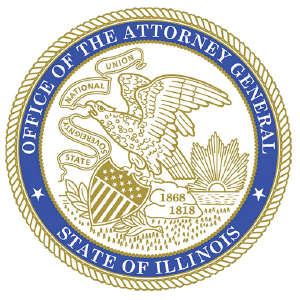Samuel D. Pusateri
Father Samuel Pusateri is an example of a pedophile priest whom the Diocese of Peoria long ignored. A member of the Order of Saint Benedict, he pleaded guilty in 1991 to criminal sexual assault of a 17 year old student at Saint Bede Academy in Peru—within the diocese’s geographic bounds. But for years, the diocese resisted publicly naming him as a credibly accused priest. The reason? “That’s not my man,” a church representative explained.
The reason why the diocese was reluctant to publicly name Pusateri as a child sex abuser may have something to do with how bishops generally responded to allegations of child sex abuse by members of religious orders. As one representative for multiple Illinois dioceses explained to the Attorney General’s investigators, a bishop’s response simply would be, “That’s not my man.” What the representative meant is that, although religious order clerics like Pusateri must receive a diocese’s permission to minister within its territory, they generally are governed by their order rather than the diocese. Put another way, the dioceses disclaim responsibility of any sort for those clerics operating within their geographic bounds who are not technically diocesan priests.
But Bishop John Myers’ response to Pusateri’s conviction undercuts that post hoc justification. A month after Pusateri was sentenced in 1991, the bishop wrote the prison chaplain where the disgraced priest was serving his time to request “your special attention for Father Samuel.” He followed this with a letter-writing campaign seeking permission for Pusateri to celebrate prison masses using grape juice instead of wine—a quest that culminated with Bishop Myers pleading Pusateri’s case to Cardinal Joseph Ratzinger, who would later become Pope Benedict XVI.
Bishop Myers did eventually revoke Pusateri’s permission to minister (or faculties) in the Diocese of Peoria. But he delayed doing so for years until late 1993—and even then he did not rule out the possibility he might renew Pusateri’s faculties after the priest was released from prison. “With regard to the request to have the faculties of the diocese restored,” Bishop Myers wrote to Pusateri’s religious order that his advisors’ “recommendation almost unanimously was ‘the time is not yet right.’” One wonders: when would be the right time to welcome a convicted child sex abuser back to the fold?
Pusateri never returned to the Diocese of Peoria. But in 1995, he turned up in the Diocese of Joliet, where he served as chaplain to the Franciscan Sisters in Wheaton until 2004. He then departed for Rome, where he remained engaged in active ministry as recently as 2018, when the Attorney General’s investigation began.
"That's not my man," a church representative explained.
After initially resisting, both the Diocese of Peoria and the Diocese of Joliet ultimately relented to the Attorney General’s insistence that Pusateri—who, to reiterate, is a convicted child sex abuser—be named on their respective public lists of credibly accused priests. It is difficult to understand why this result took so long to accomplish and caused so much consternation. The only purported explanation—that Pustaeri is “not my man”—just doesn’t hold up.
